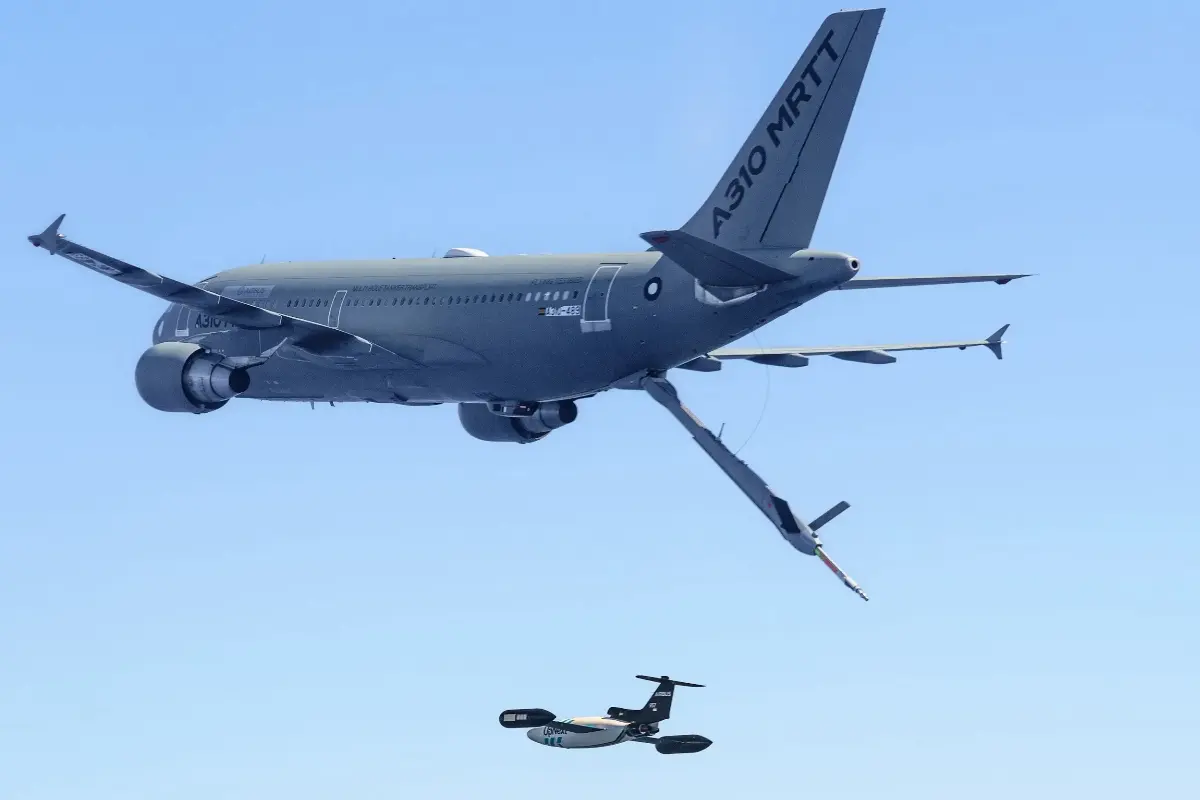
Do you want to access to this and other private contents?
Log in if you are a subscriber or click here to request service
Airbus achieves in-flight autonomous guidance and control of a drone from a tanker aircraft
A second campaign is expected towards the end of 2023

Airbus Defence and Space and the company’s wholly-owned subsidiary, Airbus UpNext, have achieved in-flight autonomous guidance and control of a drone using an A-310 MRTT (Multi-Role Tanker Transport).In a first step towards Autonomous Formation Flight and Autonomous Air-to-Air refuelling (A4R), the technologies demonstrate a significant breakthrough for future aerial operations involving manned and u...
red/f - 1250377
AVIONEWS - World Aeronautical Press Agency
AVIONEWS - World Aeronautical Press Agency